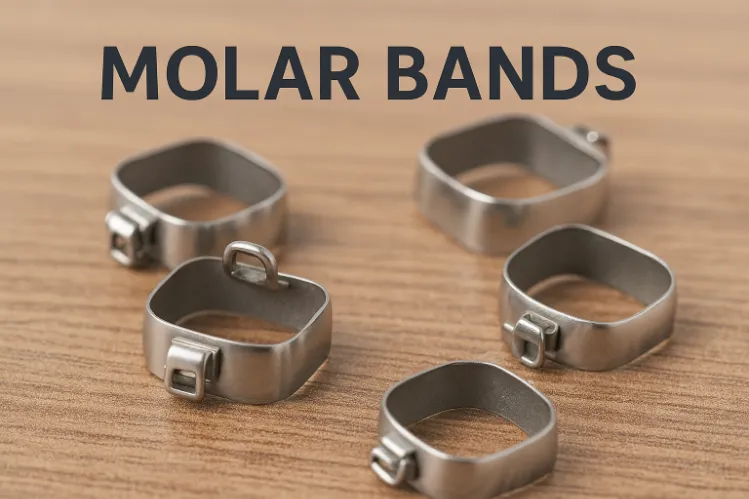
Every parent wants their child to have a healthy, confident smile. While it’s natural for teeth to shift as children grow, some dental issues may require orthodontic treatment like braces. Knowing the signs early will also be beneficial to you so that your child doesn’t have to spend a lot of money later and feel uncomfortable.
If you are concerned that your child will need braces or not, then this blog is designed for you. In this article, early symptoms, possible causes, and when one should consult a professional, especially within the context of the NHS in the United Kingdom, shall be explored.
Interceptive orthodontics is a process of orthodontic treatment that is done on a child before the development of bone and teeth is complete. It may also contribute to early identification of other severe problems that, if left untreated, may cause orthodontic treatment to take longer or fail.

The early treatment is done when the child is young, and it involves correcting problems like dental malocclusion, crowding, or jaws that do not fit properly in children aged between seven and ten. Another aspect is that at this stage the jaw is still growing which makes it easy to guide teeth to the right positions.
This treatment may involve:
Interceptive orthodontics not only improves dental health but also enhances a child’s ability to chew, speak, and smile confidently.
The National Health Service in the UK insists on children visiting a dentist as soon as the child turns one. At around the time of the seventh birthday, your dentist is likely to determine if your child will require the orthodontist’s services and make a referral. NHS braces are provided to children under the age of 18 years in case of a clinical need for them although this depends on the degree of severity of the condition.
Private orthodontic treatment is also an option for parents seeking earlier intervention or aesthetic solutions that may not qualify under NHS criteria.
You can also read our detailed blog on All Your Teeth Straightening Options Explained.
Identifying the signs that your child might need braces early can save you time and effort in the long run. Here are some of the most common indicators that it’s time to consult an orthodontist.

One of the earliest and most noticeable signs is crowding or overlapping teeth. This occurs when there isn’t enough space in the jaw for all the teeth to grow properly. It can make brushing and flossing difficult, increasing the risk of cavities and gum disease.
If left untreated, overcrowding can worsen as more permanent teeth emerge, making future orthodontic treatment more complex.
A misaligned bite, also known as a malocclusion, is another common reason children need braces. This occurs when the upper and lower teeth don’t fit together properly, which can lead to functional issues and discomfort.
A misaligned bite can cause difficulty chewing, speech problems, and jaw pain if not addressed early.
Losing baby teeth earlier than expected can lead to alignment issues in permanent teeth. When a baby tooth is lost too soon, surrounding teeth may shift into the empty space, leaving insufficient room for the permanent tooth to grow properly.
Early loss of baby teeth often requires orthodontic evaluation to prevent long-term complications. Treatments like space maintainers can help preserve the gap until the permanent tooth emerges.
There are several problems that a child may have in the dental area that call for early orthodontics. Knowledge of these issues will enable you to realize they exist in your child and consult a dentist or orthodontist. Here is a list of places where you are likely to develop dental problems that could be solved by braces.

Thumb sucking is a natural reflex for young children, but when the habit persists beyond the age of 4 or 5, it can lead to dental complications. Prolonged thumb sucking can cause the upper front teeth to push outward and the lower teeth to tilt inward, leading to an open bite or overbite.
Addressing thumb sucking early through gentle behavioral interventions or dental guidance can reduce the likelihood of requiring braces.
Speech development can sometimes be affected by dental alignment issues. Misaligned teeth or jaw abnormalities may hinder a child’s ability to pronounce certain sounds correctly. For example, a lisp or difficulty pronouncing “s” and “z” sounds may occur if the tongue cannot properly touch the roof of the mouth.
Braces can help correct the alignment of teeth and jaw, often improving speech clarity over time.
Read our detailed blog on How Orthodontic Treatment Can Complement Speech Improvement.
Chronic mouth breathing may indicate an underlying issue with the structure of the jaw or teeth. This habit is often linked to narrow dental arches, which can restrict airflow through the nasal passages. Over time, mouth breathing can affect the development of the face and jaw.
Orthodontic treatments like expanders can help create more space in the upper jaw, improving both breathing and dental alignment.
While regular dental checkups are crucial for maintaining your child’s oral health, there are specific instances when a visit to an orthodontist is recommended. Early orthodontic evaluations can identify problems that may not be immediately obvious to parents.
The British Orthodontic Society recommends that children should have an orthodontic evaluation by age 7. At this stage, most children have a mix of baby teeth and permanent teeth, making it easier for an orthodontist to spot potential issues.
Even if no issues are identified, regular monitoring can ensure your child’s dental development stays on track.
Certain signs may indicate the need for an earlier orthodontic consultation, even before the age of 7. These include:
If you notice any of these signs, consult your dentist, who can provide a referral to an orthodontist.
In the UK, orthodontic treatment is available on the NHS for children under 18 who meet specific clinical criteria. NHS treatment typically covers severe cases, such as significant bite issues or overcrowding. However, for milder or purely cosmetic cases, private orthodontic care may be necessary.
Understanding your child’s eligibility and exploring private options can help you make an informed decision about their care.
Starting orthodontic treatment early comes with several advantages. By addressing dental issues while the jaw and teeth are still developing, treatment can often be more effective and less invasive.
Early intervention can help prevent minor problems from becoming severe. For example, correcting a narrow jaw early on can reduce the risk of overcrowding or impacted teeth later.
Treating problems early often makes braces or other orthodontic appliances more effective, shortening overall treatment time.
Misaligned jaws can cause issues such as difficulty chewing, speech problems, and jaw pain. Early orthodontic treatments like expanders or braces can guide the growth of the jaw, ensuring better alignment and function.
Correcting jaw alignment early also reduces the need for more invasive treatments, such as surgery, in the future.
Dental issues can sometimes affect a child’s self-esteem, especially as they become more aware of their appearance. Early orthodontic treatment can help improve their smile, boosting their confidence at school and in social situations.
Helping your child feel good about their smile early on can have lasting effects on their confidence and well-being. The next step is to consult with your dentist or orthodontist to determine the best plan for your child. Early action can make all the difference in achieving a healthy, beautiful smile.
Being aware of whether your child will require braces at an early age can go a long way towards better dental care, and self-esteem. This means that by recognizing common signs of crowding, bad bite problems, or an early loss of the baby's teeth, then you can prevent further complications. Unlike fixed appliances, early intervention contributes substantial benefits that prevent future severe problems with the jaw and teeth. In the UK, your child’s dentist will be able to advise you if your child is likely to need braces and whether NHS or private treatment is an option. Whether it is for functional problems or aesthetic requirements, early intervention is always beneficial and provides our children with the healthiest and most confident future.




Curated the best for your knowledge
.png) Metallic Taste in Mouth: Causes and How to Get Rid of It
Metallic Taste in Mouth: Causes and How to Get Rid of ItHaving metal taste in the mouth first thing in the morning can be an unexpected experience. You wake up, take a swallow, and suddenly have a metallic taste in your mouth, as if you'd been chewing on a handful of change. It's annoying, a little scary, and sometimes for no apparent reason. For some people, it will be nothing but a minor nuisance; others may fall into the late-night goose chaser. Sometimes it's a sign that there is something wrong with your braces; other times, it could mean that there is something wrong with one of your teeth. But here's the good news: Most metallic tastes are temporary, harmless, and can be treated or resolved. So let's take a closer look at the possibilities.
Read More How Molar Bands Work in Braces and Retainers to Keep Your Teeth in Line
How Molar Bands Work in Braces and Retainers to Keep Your Teeth in LineIf you’ve ever started orthodontic treatment, you already know there are a lot of tiny pieces involved. Wires, brackets, elastics, retainers, attachments… and then there are molar bands. They’re not as famous as braces themselves, but they play a surprisingly big role in keeping your smile moving in the right direction. Some people don’t really notice them. While others desperately want to know why that metal ring is even there. So let’s break it all down: what molar bands are, why orthodontists use them, and how they work in both braces and retainers. Plus, what you should expect throughout the process.
Read More.webp) Dental Bonding Cost: Prices, Process & What to Know
Dental Bonding Cost: Prices, Process & What to KnowIf you’re thinking about fixing a chipped tooth, closing a gap, or smoothing out uneven edges, dental bonding is often the easiest (and quickest) way to do it. And honestly? It’s one of the most budget-friendly cosmetic treatments out there, if you know what to expect. But here’s the part everyone worries about first: “How much does tooth bonding cost?” The short answer: it depends. The long answer: let’s break it all down so you actually understand where the price comes from, what you’re paying for, and whether bonding is the right fix for your smile.
Read MoreQuick Links

Heading